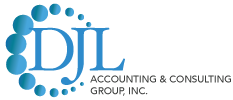Financial Management Tips for Medical Professionals Part 1
Track These Key Performance Indicators for a More Profitable 2025
As we step into 2025, monitoring the right key performance indicators (KPIs) is crucial for maintaining and growing a profitable practice. These six essential KPIs will help you identify strengths, address weaknesses, and maximize profitability in the coming year.
1. New Patient Phone Calls/Inquiries
New patients are the future of your practice. If your new patient numbers decline, it’s important to determine the cause immediately. Many doctors assume marketing is the issue, but that is not always the case. Marketing drives potential patients to call, but converting those calls into actual appointments depends on your front office staff.
2. New Patient Exams
Comparing the number of new patient exams to new patient phone calls reveals how effective your staff is at converting inquiries into actual appointments.
A well-established practice with a strong reputation should maintain a new patient conversion rate of at least 85%-90%. If your practice falls below this benchmark:
- Review recorded patient calls for areas of improvement.
- Provide your team with sales training to improve conversions.
3. Treatment Acceptance Rates
Your ability to persuade patients to accept necessary treatments directly impacts your bottom line. To measure this:
Divide the total dollar amount of treatment accepted by the total dollar amount of treatment recommended.
The goal is a 90%+ conversion rate (70% for orthodontists and periodontists).
If your conversion rate is low, consider:
- Case presentation training for staff.
- Video monitoring of case presentations.
- Offering more flexible patient financing options.
4. Production Adjustments (Write-Offs)
Many practices unknowingly underestimate their write-offs by entering in-network reimbursement fees instead of their usual and customary rates (UCR) into practice management software. To understand the true impact of insurance participation, track and assess these write-offs regularly.
5. Total Lab, Clinical Supply, and Labor Expenses
Overhead control is key to a profitable practice, and most overhead challenges stem from one of three areas:
- Lab costs
- Clinical supply costs
- Employee wages
While practice styles and procedures vary, these combined expenses should remain within a consistent percentage of revenue. Regularly monitoring these costs will help keep overhead in check.
6. Net Operating Income Before Doctor Compensation (NOI-BDC)
Many doctors are unsure of their true profit margin. Understanding your Net Operating Income Before Doctor Compensation (NOI-BDC) is essential.
To calculate NOI-BDC:
- Exclude all doctor and family compensation, retirement contributions, fringe benefits, and tax-related write-offs.
- Set up your profit and loss statement (P&L) in QuickBooks to categorize these separately.
Once structured properly, you can quickly determine your true practice profitability in under a minute by reviewing your P&L.
Create a Treatment Plan for Your Practice
By tracking these KPIs, you gain the ability to diagnose problems within your practice efficiently. This data-driven approach allows you to implement strategic solutions that enhance cash flow and ensure long-term profitability. Start monitoring these metrics today for a more successful 2025!
Information Sourced From: https://www.mcgillhillgroup.com/
Disclaimer: This blog is for informational purposes only and not intended to be taken as professional advice. Always consult a qualified professional for specific guidance. While we aim to keep information accurate and current with 2025 tax regulations, be sure to review guidelines annually for updates as they frequently change.
- Debra Rodway's blog
- Log in to post comments



